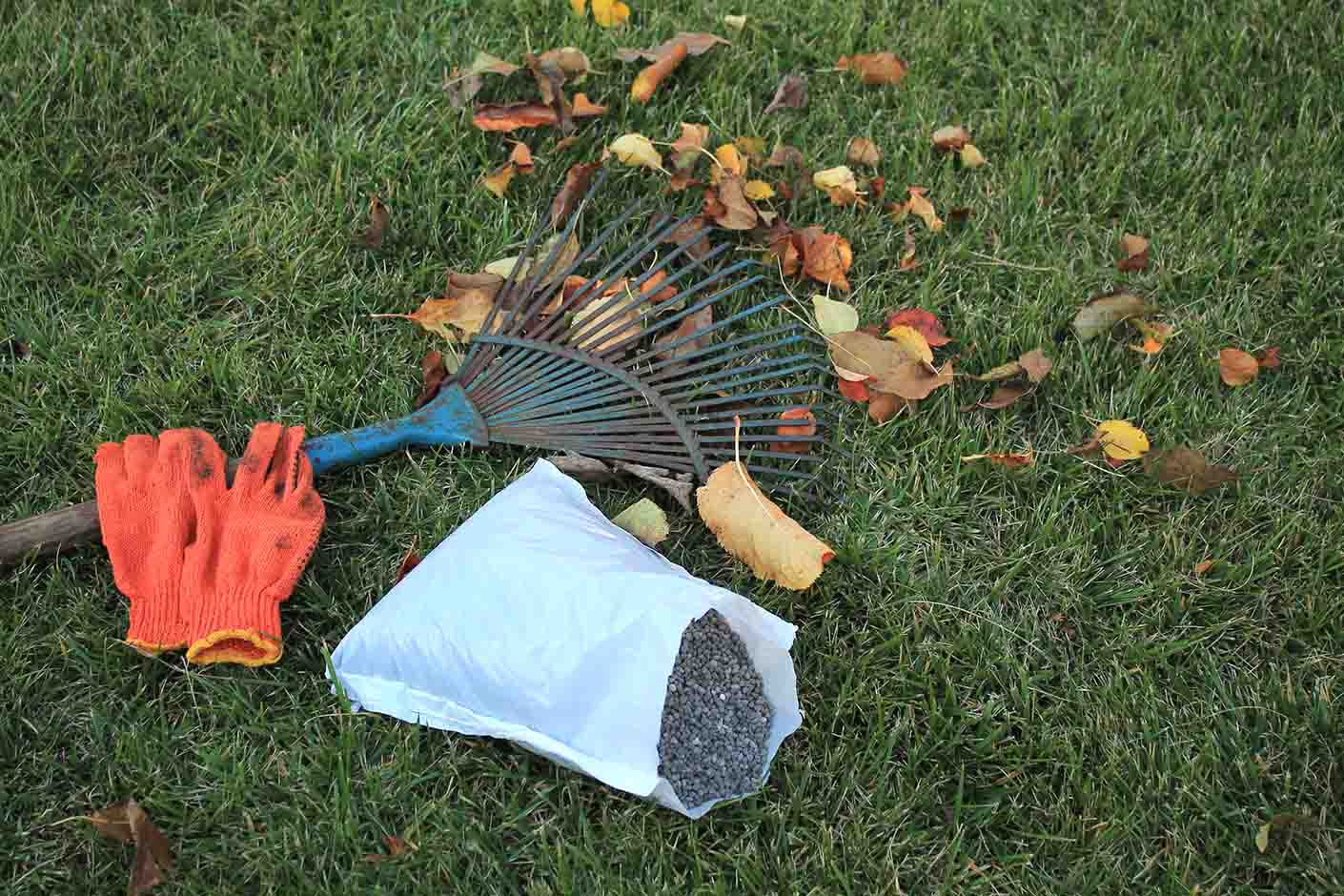Last Updated:
August 21, 2025
Utah’s unique climate creates very specific needs when it comes to lawn care, and one of the most important steps you can take in the fall is proper fertilization. The hot, dry summers in Utah can stress grass significantly, and without the right nutrients going into winter, lawns may struggle to recover once spring arrives.
Fall fertilization strengthens your turf before dormancy and sets the stage for a healthier, greener lawn next year. Join the Holmes team as we explore several lawn fertilization tips tailored specifically to Utah’s fall conditions.

Not all fertilizers are created equal, and choosing the right formula makes a big difference in fall results. For Utah lawns, which are mostly cool-season grasses like Kentucky bluegrass, perennial ryegrass, and tall fescue, nitrogen is the most important nutrient to apply in autumn.
Look for a fertilizer that is nitrogen-heavy, preferably with a slow-release component. This ensures your lawn receives steady feeding over several weeks, giving roots time to absorb nutrients before the ground freezes.

Before applying fertilizer, it’s important to clear your lawn of anything that might block nutrients from reaching the soil. In Utah’s fall months, leaves from maples, aspens, and other trees often build up quickly. If those leaves sit on your grass for too long, they can trap moisture, restrict airflow, and even encourage lawn diseases like snow mold.
Whether you rake, mulch mow, or use a blower, just make sure to keep the grass surface as open as possible. Fertilizer is most effective when it can make direct contact with the soil rather than sitting on top of a thick leaf layer.

Timing is everything when fertilizing in the fall. Utah experiences cooler temperatures in September and October, with the first frost typically arriving by mid-to-late October depending on elevation. Fertilizer applied too early may not be used efficiently, while waiting too long can limit root absorption.
By aligning your fertilization schedule with Utah’s seasonal shifts, you maximize nutrient uptake and help grass store reserves for spring growth.

Soil in Utah can vary widely, from sandy soils in the southern regions to heavy clay soils along the Wasatch Front. Conducting a soil test before fall fertilization can help you determine how much to apply and whether your soil has deficiencies in phosphorus or potassium.
Applying the correct amount prevents waste, reduces runoff into waterways, and ensures your lawn benefits fully from the nutrients.

Aerating your lawn before applying fertilizer in the fall can dramatically improve nutrient absorption. Utah lawns often suffer from compacted soil, especially in areas with clay-heavy ground, and aeration helps open pathways for nutrients to reach the root zone.
This simple combination multiplies the benefits of fertilization and leaves your lawn better prepared for winter.

The way you mow leading up to winter affects how well your lawn uses fertilizer. For your last cut of the season, lower your mower blade slightly by about an inch. Keeping the grass shorter reduces the chance of snow matting, decreases disease pressure, and ensures that nutrients are concentrated where they’re needed most: in the roots.
Don’t scalp the lawn or cut it too short, but a slightly lower final mow will make your fertilizer application more efficient and help your grass head into winter stronger.

One of the most common mistakes Utah homeowners make is applying too much fertilizer in the fall. While it may seem like more nutrients will equal better results, over-fertilization can actually burn grass, encourage excessive top growth, and increase the risk of nutrient runoff.
Balanced fertilization ensures your lawn uses nutrients efficiently without suffering damage or wasting product.
Fertilizing your lawn in the fall is the single most important investment you can make in your Utah lawn’s future health. Following the tips in this post will help you give your grass the strength it needs to endure winter and thrive in spring. A well-fertilized lawn in autumn becomes more resilient against drought, disease, and Utah’s unpredictable climate.
If you want help keeping your grass green this fall and keeping your lawn protected against the harsh winter weather, be sure to call Holmes Lawn & Pest for the best lawn care in Salt Lake City!
How To Care For Kentucky Bluegrass In Utah Lawns
Kentucky bluegrass is beloved as one of the most beautiful and comfortable turf types available. Come learn how to maintain this grass in your Utah lawn.
Learn MoreHow To Care For Perennial Ryegrass In Utah Lawns
This post explores why perennial ryegrass is perfect for Utah homeowners who want a resilient lawn that looks great!
Learn MoreHow To Care For Tall Fescue In Utah Lawns
This blog post explores what makes tall fescue one of the most popular grass types in Utah, and what steps you can take to maintain a tall fescue lawn.
Learn More